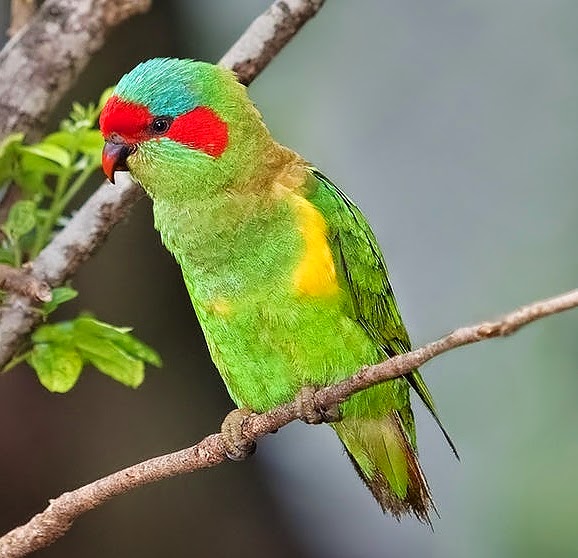 |
| Photo by Doug Janson (Wikipedia) |
Common name:
musk lorikeet (en); lóri-almiscarado (pt); lori à bandeau rouge (fr); lori almizclero (es); moschuslori (de)
Taxonomy:
Order Psittaciformes
Family Psittacidae
Range:
This species is endemic to south-eastern Australia, being found from south-eastern Queensland to Victoria and south-eastern South Australia. It also occurs in Tasmania.
Size:
These birds are 20-23 cm long and weigh 50-90 g.
Habitat:
The musk lorikeet is found in open Eucalyptus woodlands, riverine woodlands, plantations, and rural and sub-urban gardens.
Diet:
They feed on nectar, pollen and blossoms, especially of Eucalyptus, flowers, young shoots and buds such as those of Callistemon citrinus and Grevillea, small fruits and occasionally insects. They may also take cultivated crops and grapes.
Breeding:
Musk lorikeets breed in August-January. They nest in a hollow limb or hole in a tree, lined with chewed or decayed wood, and usually located high up in an Eucalyptus near water. The female lays 2 white eggs, which she incubates alone for 22-24 days. The chicks are fed by both parents and fledge about 50 days after hatching.
Conservation:
IUCN status – LC (Least Concern)
This species has a large breeding range and the global population is estimated above 100.000 individuals and described as very common. The population is suspected to be stable in the absence of evidence for any declines or substantial threats.







